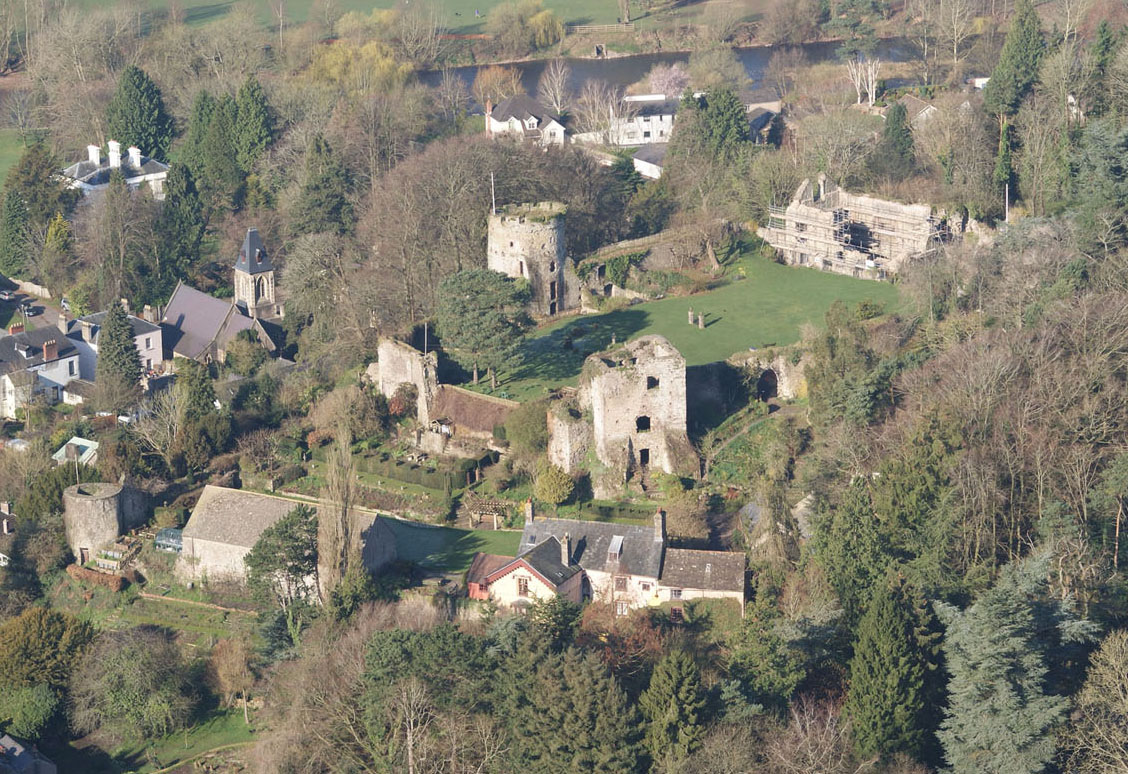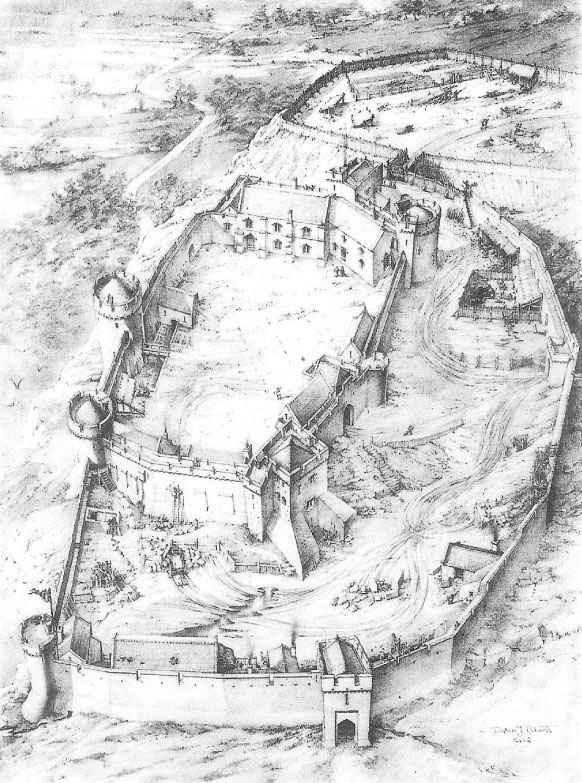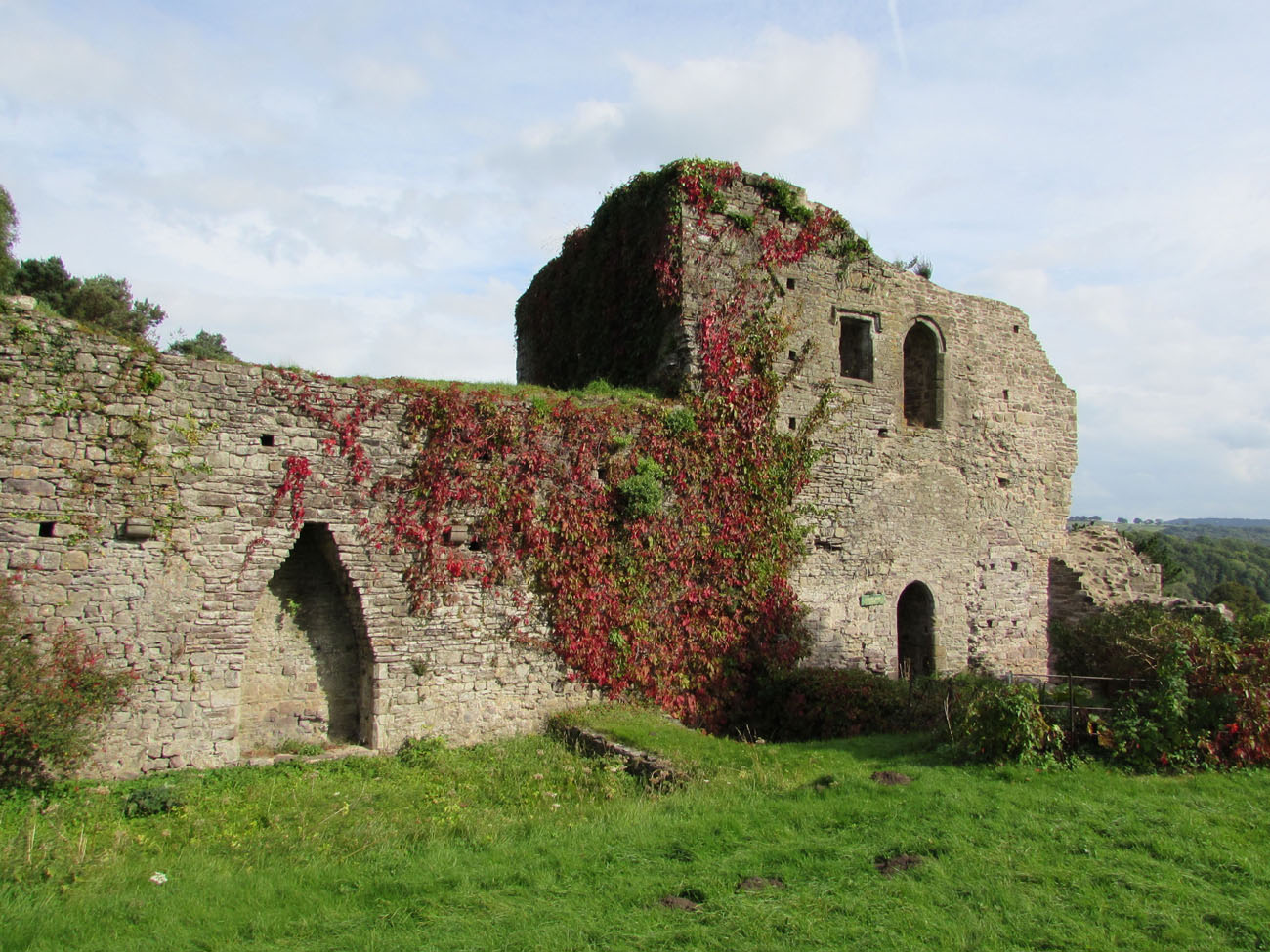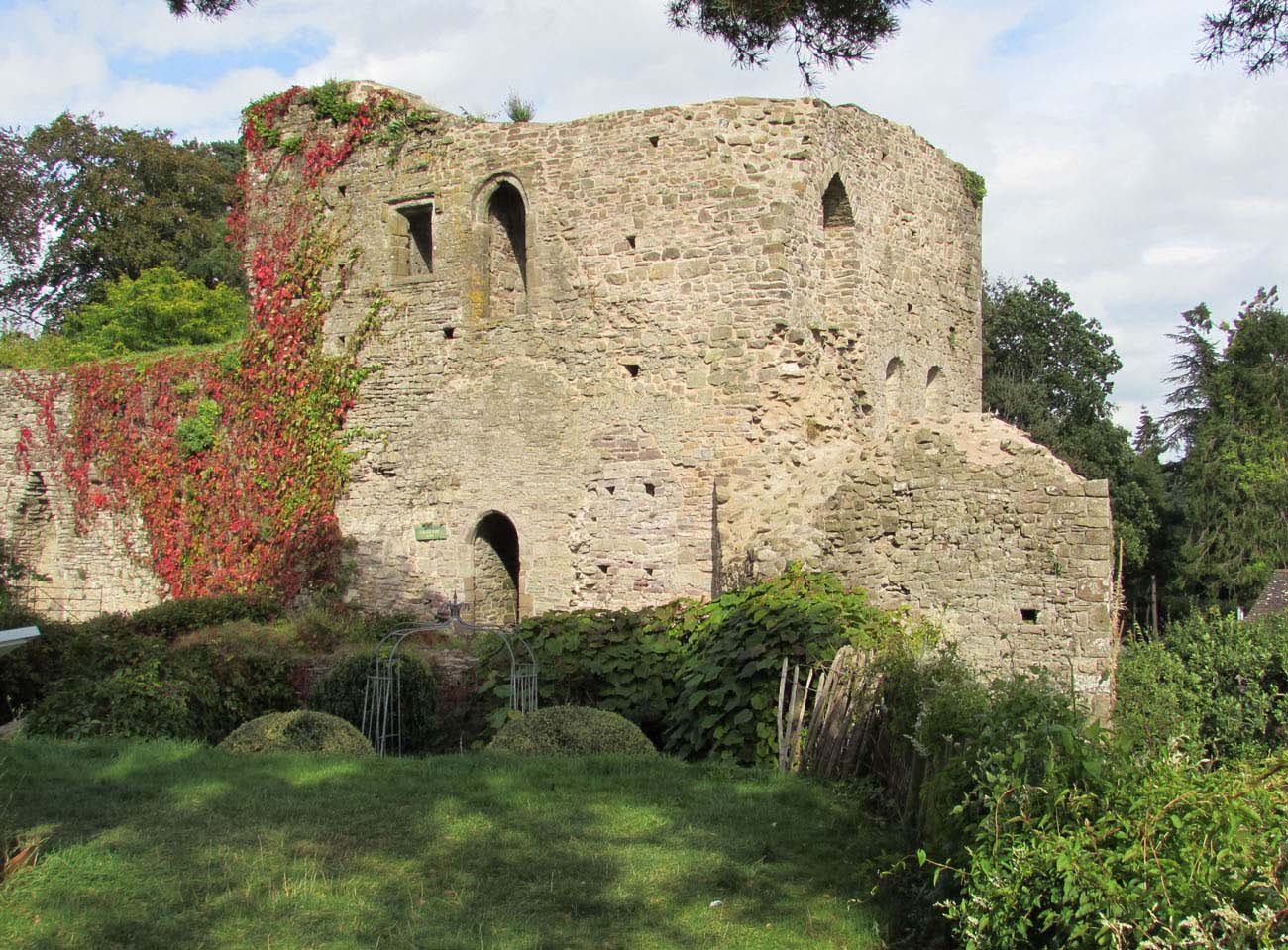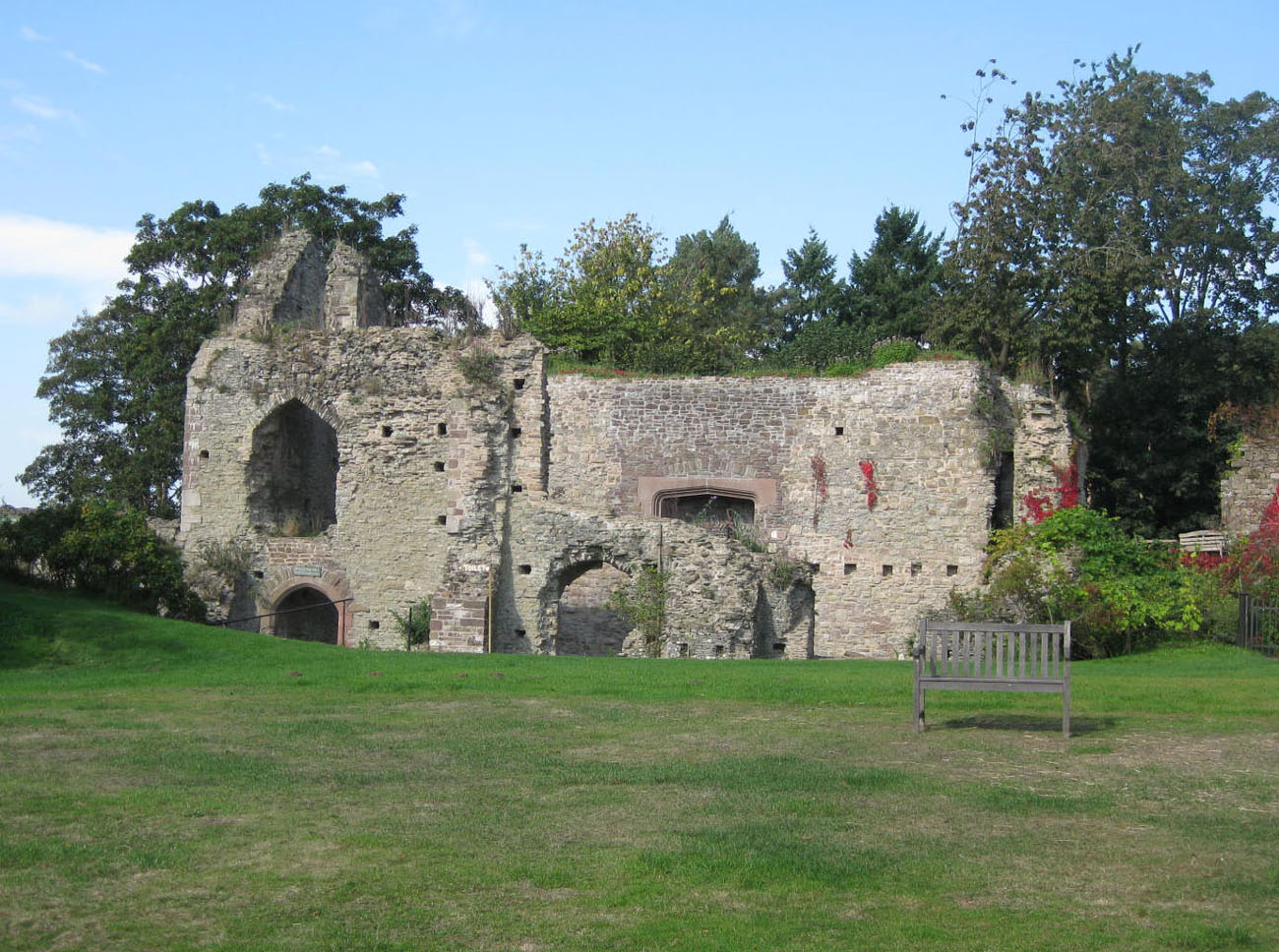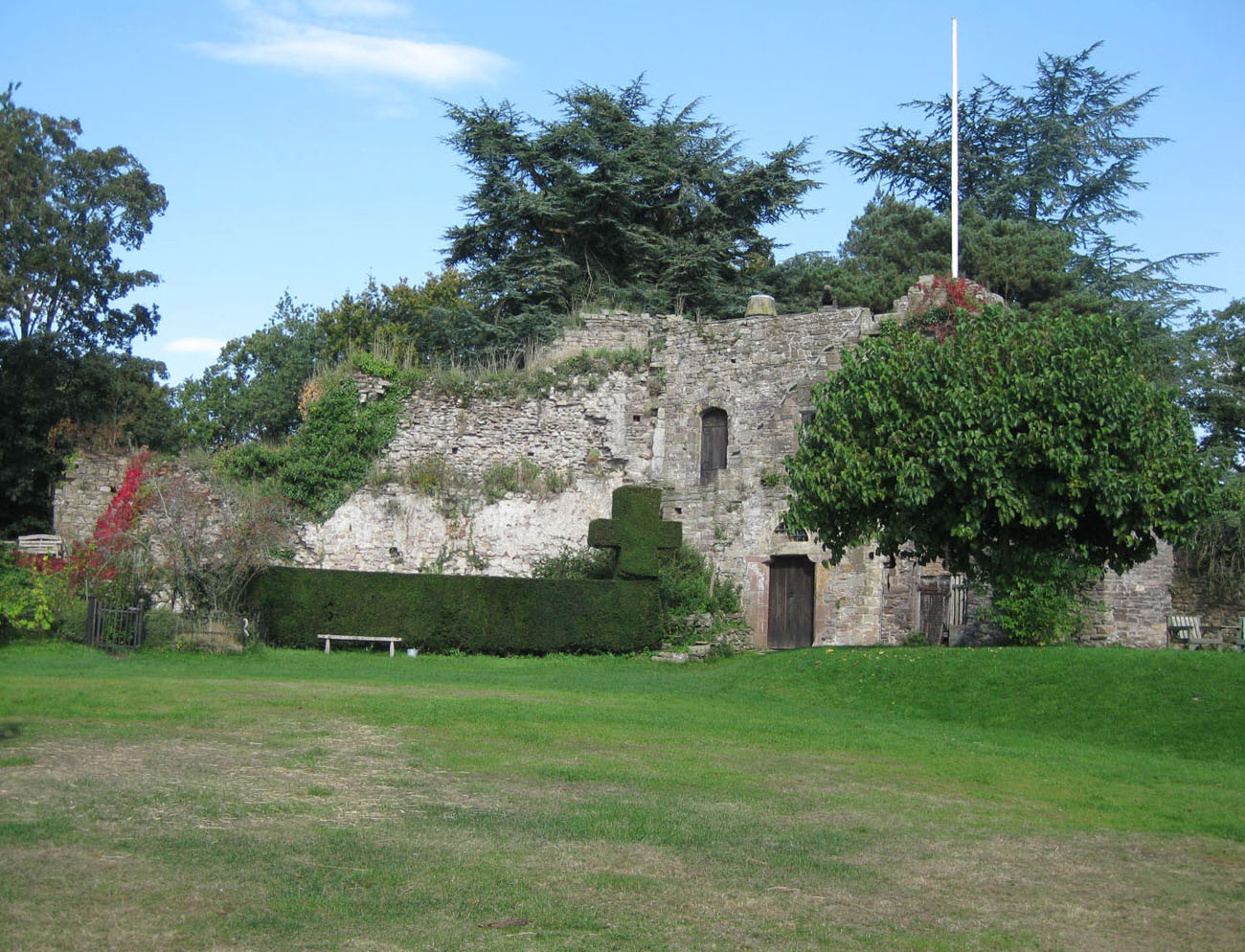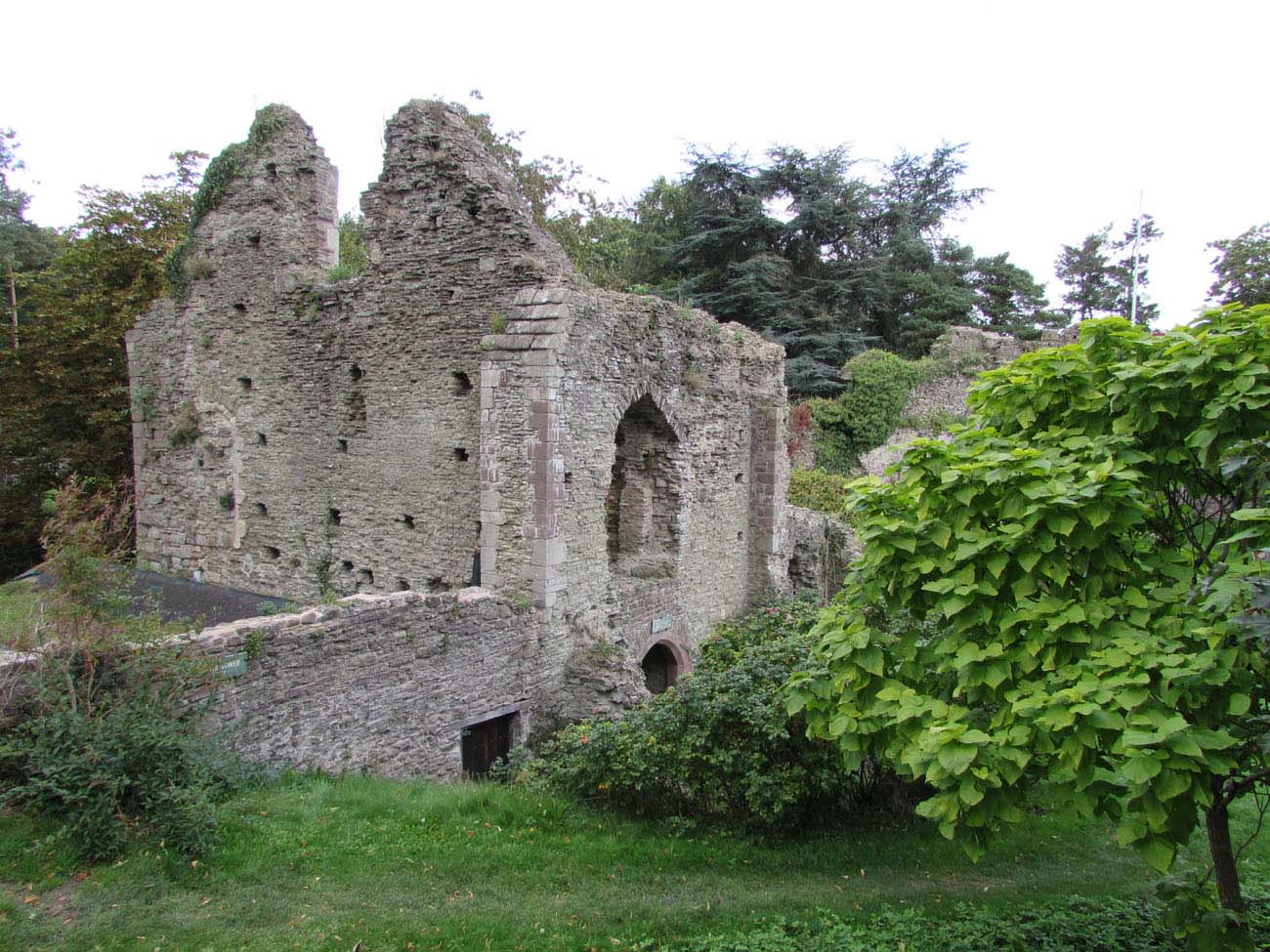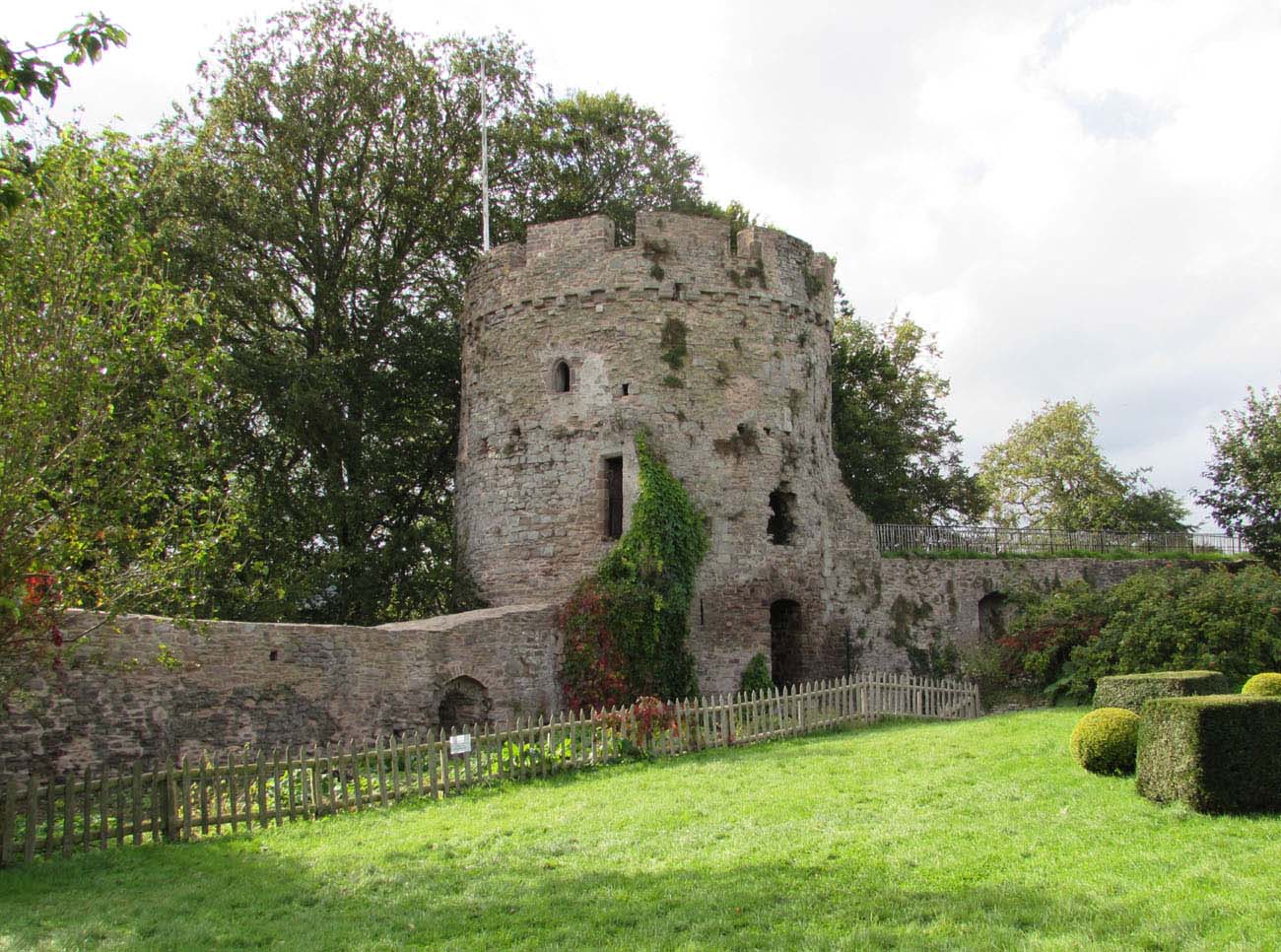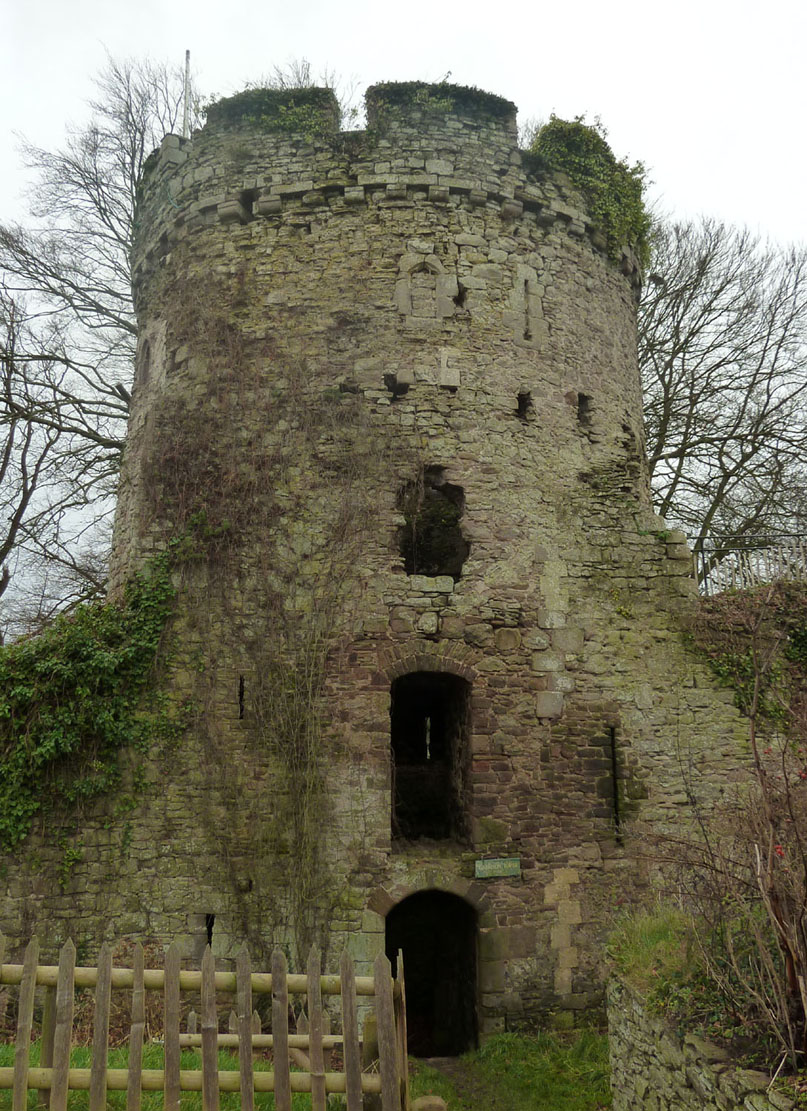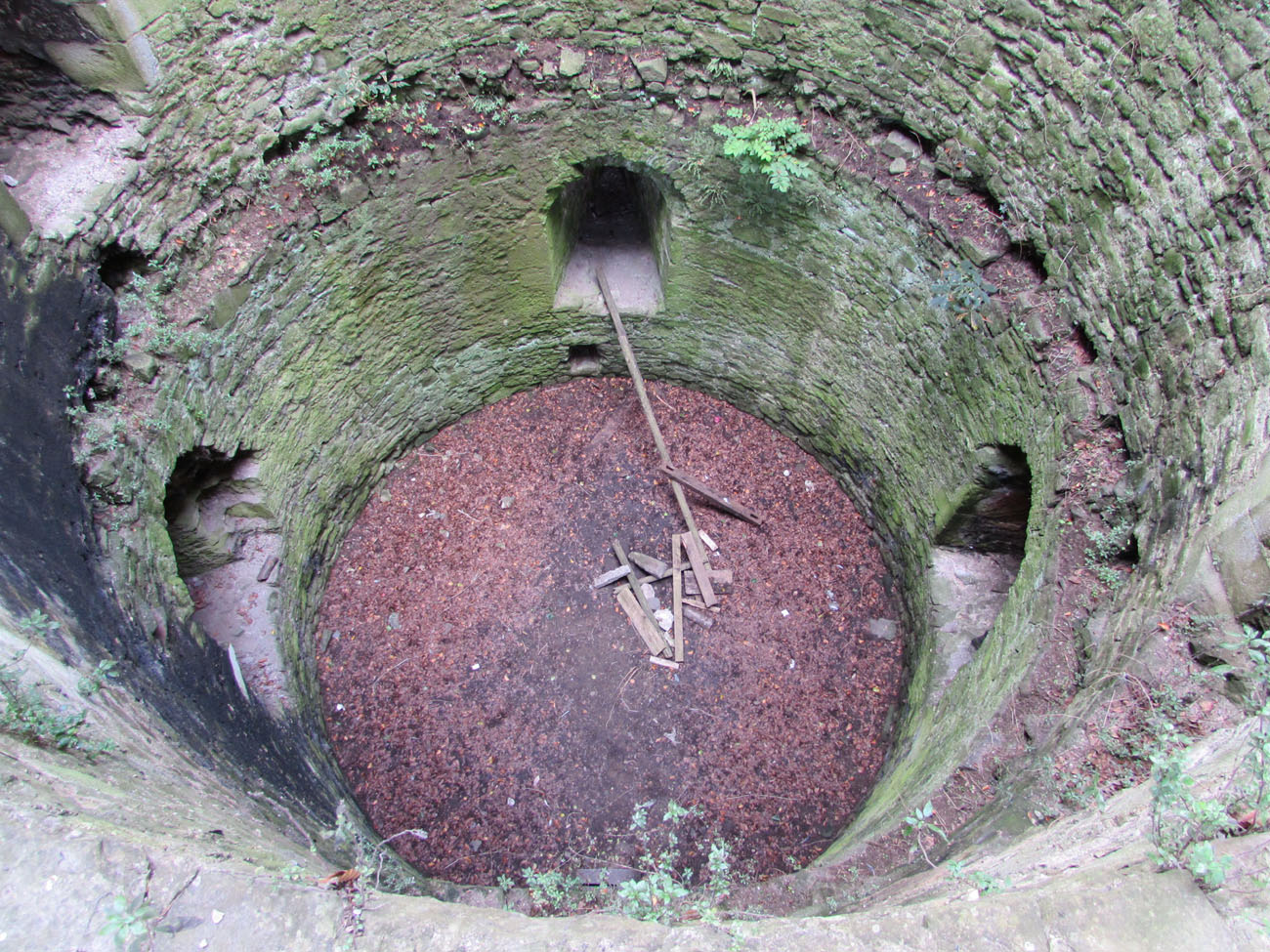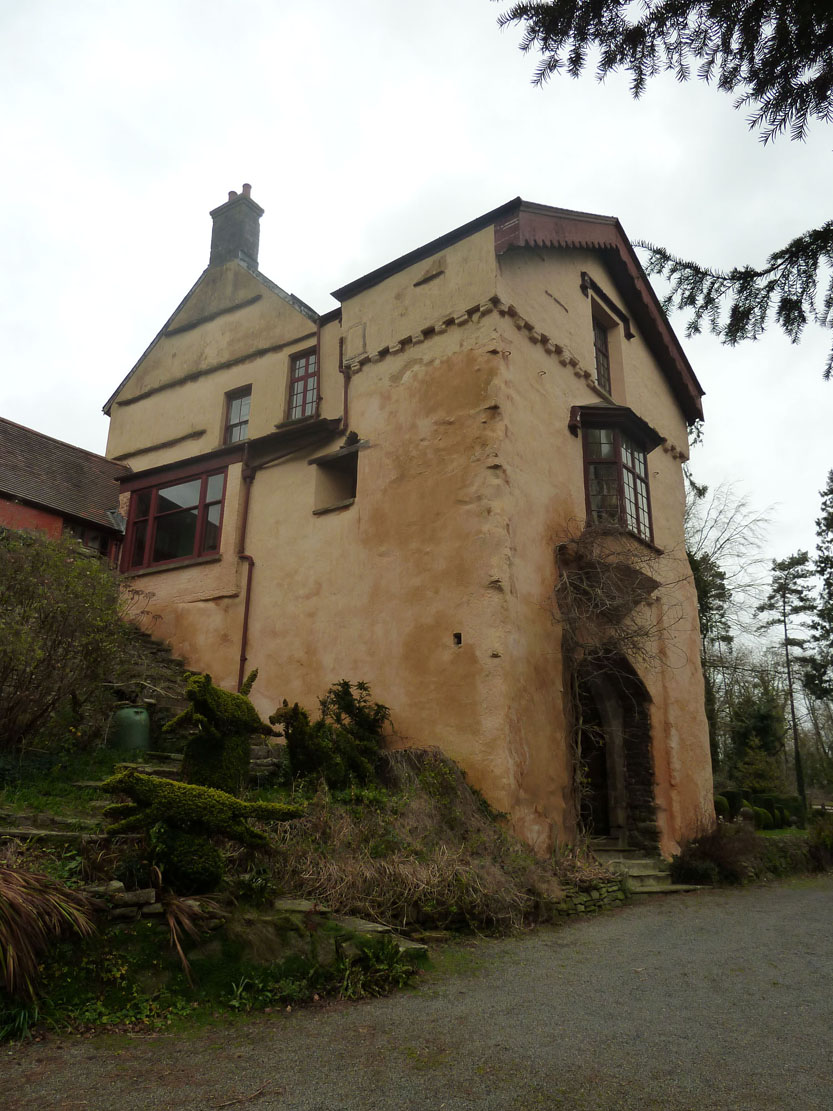History
The original castle in Usk was erected by Norman invaders at the end of the 11th or at the beginning of the 12th century. It was probably founded by Walter Fitz Richard, before in 1115 he was granted by Henry I with the lordship of Striguil (Chepstow). A settlement that served the needs of the garrison was erected next to the castle. It was built on the site of a former legionary fort protected by a ditch and an earth rampart. The exact date of construction of the castle is unknown, the stronghold was mentioned for the first time in documents only in 1138, in relation with its occupation by the Welsh. Usk was recaptured by Gilbert de Clare, the first Earl of Pembroke, and then reinforced by his son, Richard de Clare, the second Earl of Pembroke called Strongbow, who erected a stone keep. Despite this, the castle was again conquered by the Welsh in 1174 and remained in their hands for another ten years.
Richard died in 1176, leaving no male descendant. For this reason, his estate was inherited by a young daughter, Isabel de Clare. During her minority the castle was managed by the Crown, and king Henry II spent more than 10 pounds on its repair. Four years later, Isabell married William Marshal, Earl of Pembroke, who in the second decade of the thirteenth century began a major reconstruction of Usk. He erected a Garrison Tower and the adjacent round tower, and transformed the wooden palisade into a stone defensive wall. One of his sons rebuilt the keep, and shortly before 1289 Gilbert de Clare, Earl of Gloucester modernized two towers. His son, also called Gilbert, died at the Battle of Bannockburn in 1314, leaving Usk to the widow, Countess Matilda, who managed the castle until her death in 1320. Then Usk passed into the hands of his sister-in-law, Elizabeth de Burgh. She made numerous repairs, during her reign, the castle was enlarged with a new hall building, a chapel and living quarters. Elizabeth also strengthened the defense of the outer bailey. This was certainly due to the participation of her husband, Roger Dammory, in the rebellion of the Earl of Lancaster against King Edward II and his hated favorite Hugh Despenser. In 1322, the rebellion was suppressed, Roger was killed and Elizabeth was imprisoned. At that time, Usk became the property of Hugo Despenser. Elizabeth regained it in 1327 after the fall of Edward II. In 1368 Usk passed to Edmund Mortimer, Earl of March. He or his son, Roger, who died in 1398, fortified the outer bailey with a stone wall.
At the beginning of the 15th century, the great uprising of the native people broke out in Wales. In 1402, the Usk Castle was besieged by the forces of Owain Glyndŵr, but remained unconquered, although the town was plundered and burnt. The next attack took place in 1405, but this time the defenders, commanded by Lord Richard Gray of Codnor and Dafydd Gam, repulsed the attack. Encouraged by victory, they left the stronghold and defeated the Welsh at the Battle of Pwll Melyn, just a few hundred meters from the castle.
After the rebellion was suppressed, Usk became part of the Duchy of Lancaster, but after restoring stability in the country, there was no need to carry out further major renovations and modernization of the castle. From 1461, i.e. from the accession to the throne of Edward IV, the castle was incorporated into the property of the Crown. Prince Richard handed it over to Sir William ap Thomas from Raglan Castle, and then to his son Sir William Herbert, who in the 1460s transformed the keep in order to increase its living comfort in the event of his visits at Usk. Despite this, already in the 16th century, the castle began to decline, and some of the buildings were in ruins. It is known that in 1556 a local, Roger Williams, was accused of demolishing the barn and the hall building (probably only the roofs). Dilapidated, the castle survived the English Civil War with minor damages, and was finally rebuilt in 1680 into an early modern residence.
Architecture
The castle was erected on a plan similar to the oval measuring 75 x 44 meters, on a hill overlooking the eastern bank of the Usk River. On the eastern side, on the lower ground, there was an outer bailey about 90 meters long and 45 meters wide. To the east, it bordered on wetlands intersected by numerous streams.
In the mid-twelfth century only stone element of the castle was a four-sided, irregular tower in the south-eastern part of the site, sometimes described as a keep. Its walls were 1.3 to 1.5 meters thick. It consists of two floors above the basement – the ground floor and to this day has two two-light, Romanesque windows in the south wall. However, it probably played the role of a gate tower, not a keep, because in its eastern wall there is an arcade, which was later blocked. Probably the gatehouse originally had one room above the passage, and the second floor was added in the 13th century. The door was also added to connect the tower with the latrine in the south-east corner. In the fourteenth century, the levels of the tower ceilings were changed to re-create three floors, and in the second half of the fifteenth century, the northern wall was rebuilt, without window openings, but equipped with fireplaces on the upper floors. At that time, new late Gothic windows were created in the eastern wall.
In the second decade of the thirteenth century a massive stone defensive wall, about 2 meters thick, was erected, made of straight curtains in place of the earlier, wood and earth fortifications. William Marshal also reinforced the castle with a cylindrical Garrison Tower in the south-western part of the circuit and the Round Tower located south of it. The Garrison Tower was 10 meters in diameter, had four floors and defended the section from the town side. Originally, the entrance to it was on the level of the first floor, which was led by a timber staircase. The lower two floors were equipped with arrowslits, while the upper two with narrow, pointed windows. Internal communication was provided by a spiral staircase, through which one could get to the top defensive walkway, crowned with battlement. The last storey of the tower and the battlement on corbelled parapet were added during the subsequent reconstruction. Also in the second half of the 13th century, an entrance to the tower was created at the ground floor level, a latrine was placed on the third floor (connected to the wall-walk in the crown of the wall) and there was a fireplace placed on the top floor. Another tower called the North Tower was erected, as the name suggests, on the north side and had a horseshoe shape with a diameter of 10 meters. To the south-east of it, the gate was probably flanked by a similar tower. The gate itself was an ordinary opening in the curtain of the wall closed by a portcullis.
In the years 1308-1309, a rectangular building was erected by the northern curtain, called the Countess’s Chamber. It protruded about 8 meters in front of the curtain. It housed three floors connected by a spiral staircase, the upper two being heated by fireplaces. Another residential and economic buildings were erected in the northern part of the inner ward. A rectangular, two-storey building was erected there, with a hall measuring 14.6 x 7.2 meters on the first floor and with a ground floor serving as a pentry or kitchen. Next to it, at an angle, there was a chapel. The hall building from the side of the courtyard was reinforced with buttresses, between which windows with side seats at the top were pierced and a fireplace was placed in the ground floor.
Elizabeth de Burgh and her husband continued to work on the castle, erecting a bay window next to the countess’s chamber. A new south gatehouse and two drawbridges were built on the outer ward, and the moat was cleaned. The fortified outer ward protected the castle from the east and south. It had at least one corner, cylindrical tower on the south side and subsequent gates (posterns) on the north and east side. Economic buildings, including stables, were located there.
Current state
The castle has survived to modern times in the form of a legible ruin. The entire defensive circuit of the upper castle has been preserved, with the exception of the southern tower. Also the gatehouse and the corner tower on the area of the former outer ward have been preserved. In a slightly worse condition, the northern residential buildings are visible, the castle chapel has not been preserved. The Usk stronghold is in private hands, but it is open to the public, during the summer there are outdoor events organized there.
bibliography:
Kenyon J., The medieval castles of Wales, Cardiff 2010.
Lindsay E., The castles of Wales, London 1998.
Salter M., The castles of Gwent, Glamorgan & Gower, Malvern 2002.


